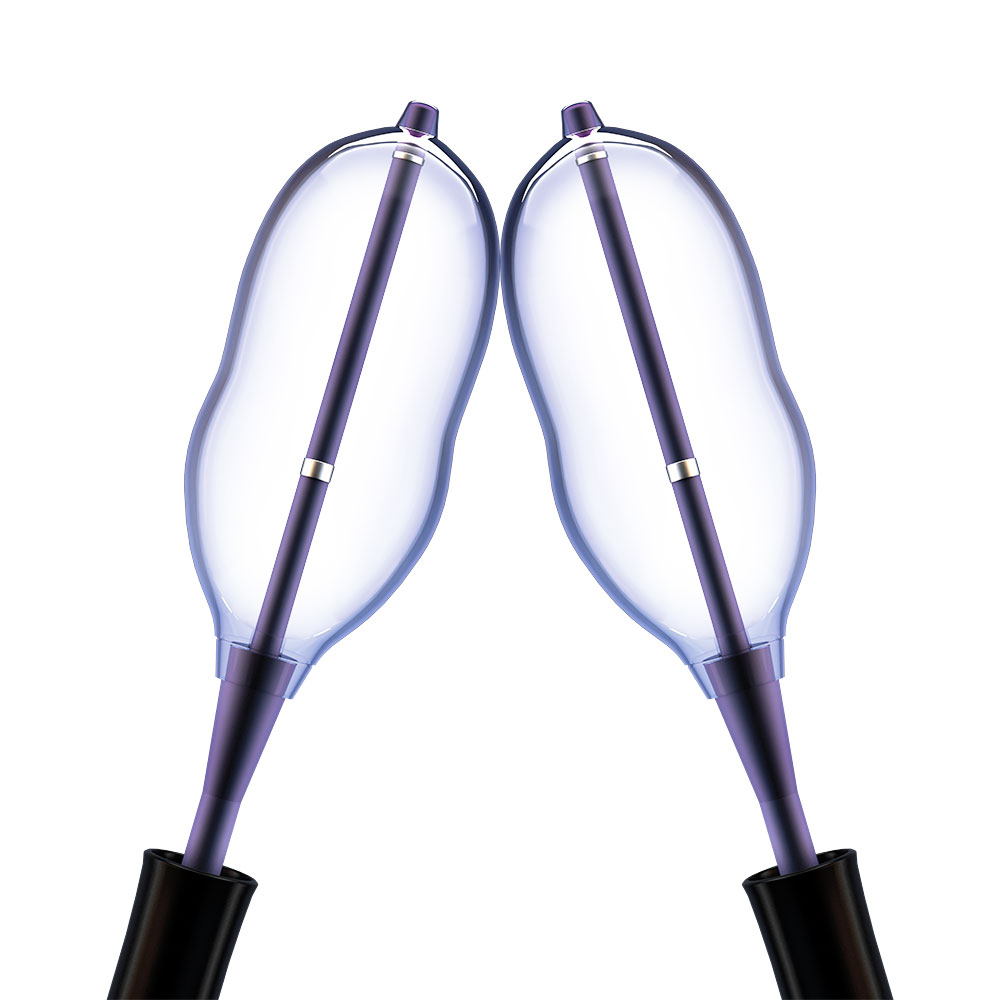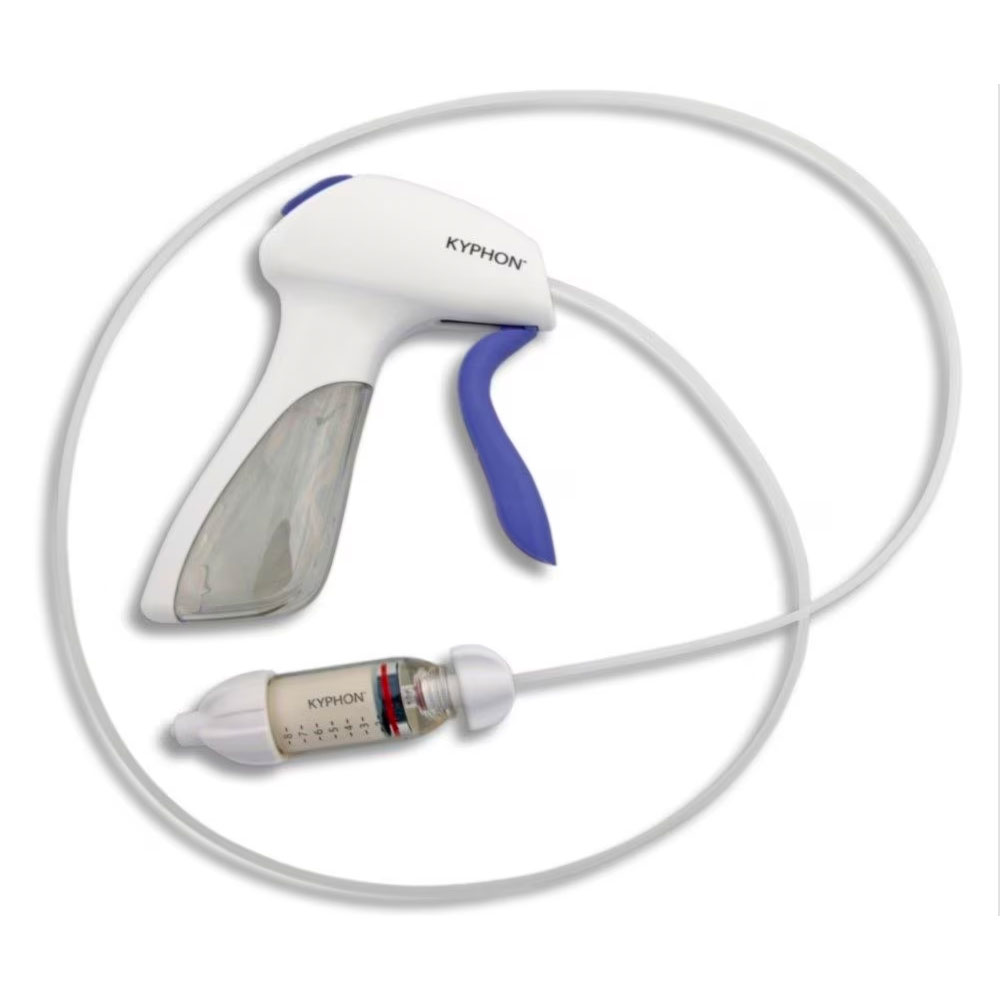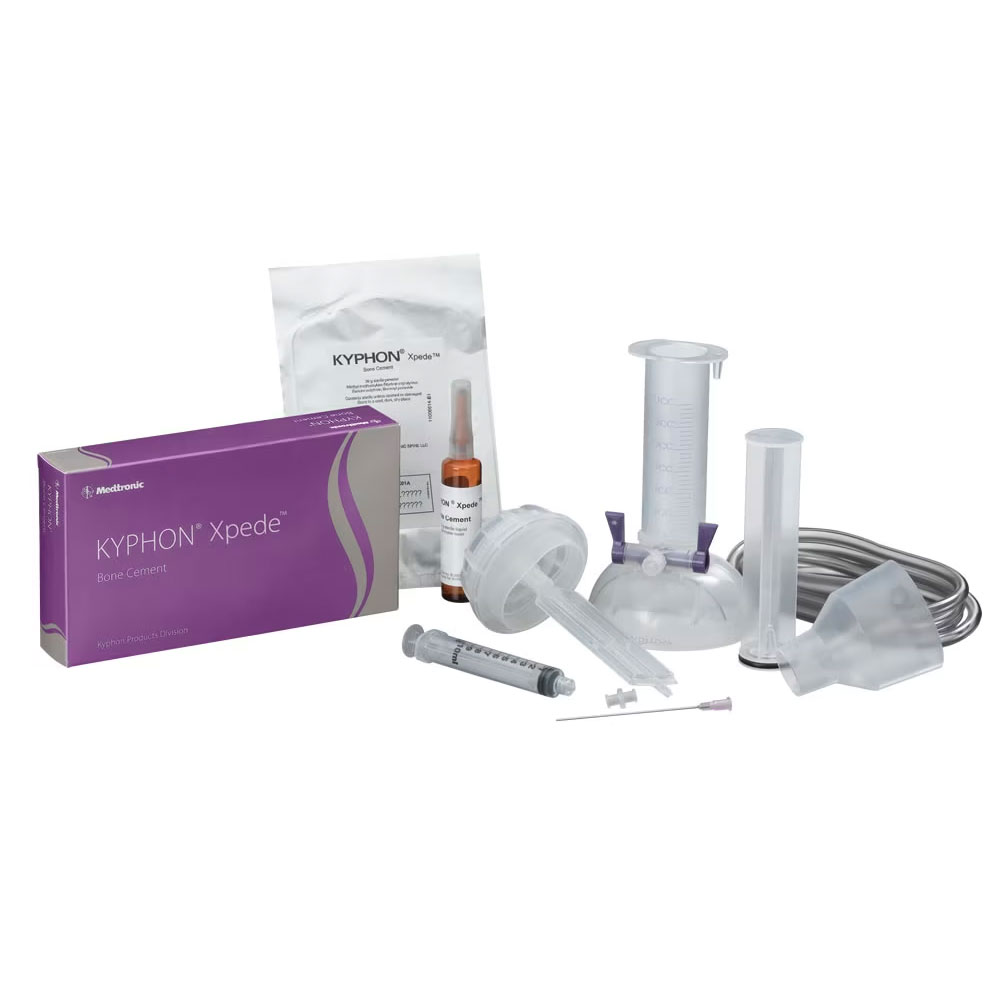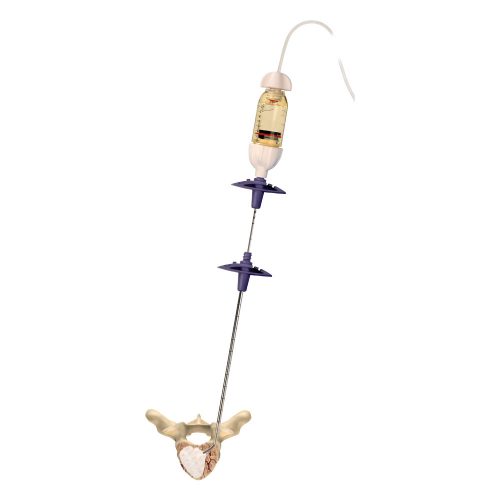System Components
Bone Access Tools and Inflatable Bone Tamps
Kyphon™ vertebral body access tools and inflatable bone tamps (IBT) are available in a variety of sizes, lengths, volumes, and tip types allowing you to customize based on the needs of your patients.
Cement and Cement Delivery systems
Three cement options along with optional accessories are available to meet your procedural needs. Using Kyphon™ bone cement with the Kyphon™ cement delivery system (CDS) allows for the delivery of highly viscous bone cement from up to 48” away from the radiation source while still maintaining tactile feel.
Kyphon Assist™
Directional Cannula for Balloon Kyphoplasty
The Kyphon Assist™ directional cannula provides more predictable inflation and direction of cavity creation during balloon kyphoplasty surgery for vertebral compression fractures. Available in both 8 ga and 10 ga.
Indications
Kyphon™ balloon kyphoplasty is used to treat pathological fractures of the vertebral body due to osteoporosis, cancer, or benign lesions. Cancer includes multiple myeloma and metastatic lesions, including those arising from breast or lung cancer, or lymphoma. Benign lesions include hemangioma and giant cell tumor.
Procedure
Balloon Kyphoplasty Procedure Overview
Balloon kyphoplasty is a minimally invasive procedure designed to repair vertebral compression fractures (VCFs) by reducing and stabilizing the fractures. It treats pathological fractures of the vertebral body due to osteoporosis, cancer, or benign lesions.
Prevalence of Vertebral Compression Fractures
Osteoporosis, a condition characterized by low bone mass and deterioration in the micro architecture of bone tissue, causes more than 750,000 – 800,000 spinal fractures each year in the United States.1 Vertebral fractures are the most common osteoporotic fractures, yet approximately two-thirds are undiagnosed and untreated.2
- Patients have as much as a 5-fold increased risk of another fracture within 1 year of initial fracture.2
- Incidence of vertebral compression fracture increases progressively with age throughout later life.2
How Balloon Kyphoplasty Works
The goal of balloon kyphoplasty surgery is to relieve pain, restore lost vertebral body height, and stabilize the fracture. The procedure involves the insertion of two inflatable bone tamps (balloons), or IBTs, into the vertebrae. The IBTs are inflated under volumetric control, reducing the fracture and pushing the endplates apart, thereby partially restoring vertebral height and correcting angular deformity.3 The newly formed cavity is filled with bone cement after IBT removal.
Procedure Steps and Duration
Through a pair of small incisions, each approximately 1 cm in length, the specialty physician uses a needle and cannula to create a small pathway into each side of a fractured vertebral body. A small balloon is guided through each cannula into the vertebra. Each balloon is carefully inflated to raise the collapsed vertebra and return it to its normal position. Inflation of the balloon creates a void (cavity) in the vertebral body.
Once the vertebra is in the correct position, the balloons are deflated and removed. The resultant cavities are filled with bone cement forming an “internal cast” to support the surrounding bone and prevent further collapse.
The balloon kyphoplasty procedure typically takes about one hour per fracture and may be performed in an outpatient setting. The procedure can be done using either local or general anesthesia; the specialty physician will determine the most appropriate method, based on the patient’s overall condition.
- Medtronic Data on File – Business Insights & Analytics, Sept 2019
- Brunton S, Carmichael B, Gold D et al. Vertebral compression fractures in primary care: recommendations from a consensus panel. J Fam Pract. 2005;54(9):781-788.
- Wardlaw D, Van Meirhaeghe J, Ranstam J, et al. Balloon kyphoplasty in patients with osteoporotic vertebral compression fractures. Expert Rev Med Devices. 2012 Jul;9(4):423-36.





